
How to Build Priceless Relationships on LinkedIn
It’s one thing to grow your network on LinkedIn and it’s another to meaningfully grow your network.
One of the biggest misconceptions these days is that more followers = more sales. But taken by itself and in my experience, your follower number is just a vanity metric. It’s what you DO with those connections that matters.
Above all, if you want to build valuable relationships on LinkedIn you need to stay centered on your WHY. Simon Sinek’s ethos here is core to my strategy on LinkedIn and in business.
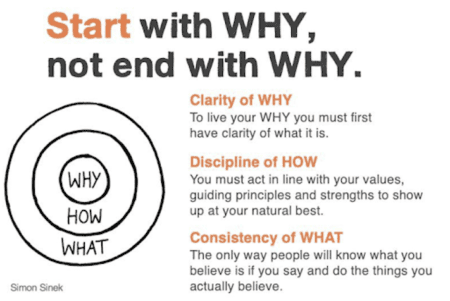
LinkedIn is an outstanding platform to:
- A conversation starter
- Showcase your experience and what you stand for in a unique way
- Create meaningful relationships you otherwise wouldn’t have access to
- Open doors for opportunities: jobs, prospecting, writing, speaking, consulting…
Cutting through the clutter.
In the professional world, LinkedIn is THE social platform to focus on. But with 660M users across the world (196M+ in North America alone), it’s not easy to find your “people.”
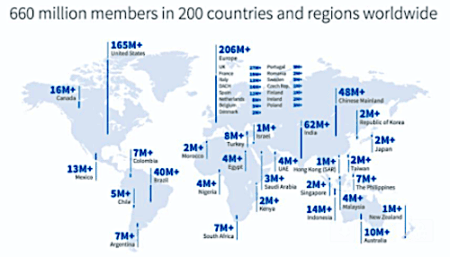
And if we’re talking about selling, the table stakes are increasing to truly stand out in a remarkable way.

This increased adoption of the platform means that companies and people are getting barraged with messages and connection requests on a regular basis.
The majority of which turn people off more than they turn them on… closing the door rather than opening it. Is that what we’re really going for?
Case in point:
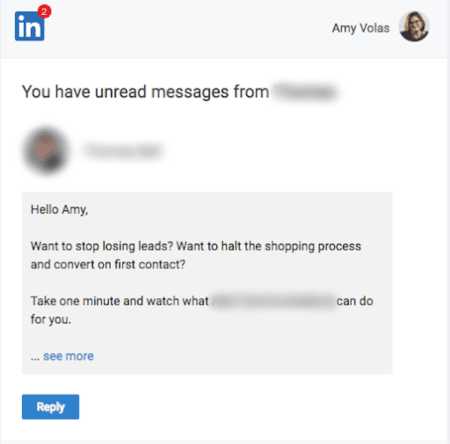
Have you seen a cookie-cutter request like this? I can smell the icky automation a mile away. While tempting for the sake of “efficiency,” how do you think a high-profile buyer is going to respond?
The key to getting responses that move the needle is to make every one of your connection requests relevant.
Here are a few pro-tips on relevance:
- Have a compelling reason to connect. If you’re not connecting over something THEY care about, what’s the point? Your prospects are busy, so if they’re not going to care about why you’re reaching out, don’t reach out yet. It’s better to wait until you do.
- Nail the timing. Keep tabs on what’s happening in their world and make sure you’re reaching out when they’ll be most receptive. I do this with tools like LinkedIn Navigator, Google Alerts, and TweetDeck.
- Individualize your message. The person receiving this connection request should always feel like you’re speaking to them and them alone. Otherwise, they’ll be quick to write it off as an automated message. Lavender is my right arm for email, many times, I craft the message there first to give me extra assurance I put my best foot forward.
- Do NOT use automation
Automated messaging screams laziness and a spray and pray method that leaves so much opportunity behind. It also leads to weak, surface-level connections that don’t bring either side much benefit. Stick to the real stuff and be authentic.
Make the success of your audience a priority.
People want to engage with content that helps them improve their lives. LinkedIn is a powerful platform that can bolster your career, create opportunity, and ultimately grow your business.
When posting, it’s important to think about intention first. Is it to start a conversation to engage with people or to post to talk “at” them?
Remember, people want to engage with you or buy from you when you can genuinely:
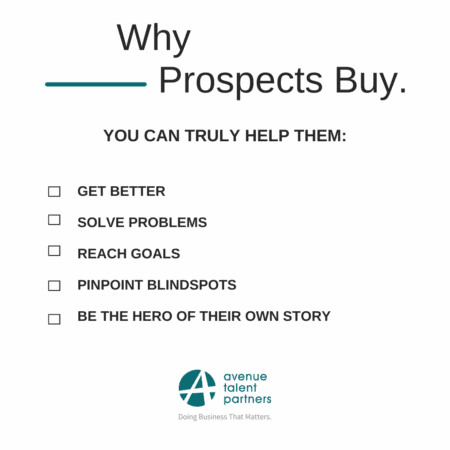
If you can help them do any of these things, you’re golden. Even better if it’s several of these things!
Sure, it takes longer, but gosh is it worth it!
Here are a few ways to do this well:
- Share content that helps them get/be better
People are always on the hunt for ways to improve what they do. Whether it’s an insight into the power of a new sales tool or teaching how to make a killer first impression at the negotiation table, providing content that makes people better at their job is a surefire way to get them interested in connecting with you. Speak from your expertise, experience, and point of view. In the event you’re speaking to someone else’s experience that inspired you, make sure you give credit where it’s due. - Offer a unique perspective on something important to them
Some of the best content simply helps people see something in a new light. For example, if you’ve got your fingers on the pulse of the sales world, there’s always something to explore with an opportunity to share a fresh perspective with the ability to back up your statements with actionable takeaways. - Help them solve a specific problem
You can think of these as how-to posts or actionable comments within their posting that outline a solution to a problem. For example, what’s working for you to get more leads, ace their next sales interview, improve their client relationships, go for funding, retain business, etc. When people trust you to help solve their problems because what you’re sharing works, they’ll be sure to keep coming back for more. - Give more than you take
When you keep your focus on giving, the receiving part comes naturally… even when what you might share doesn’t go viral. The long-game mindset prevails and as Mark Twain said, “go out on a limb. It’s where the fruit is.” Isn’t that the truth, even when we may not immediately realize it. Remember, words matter and how you show up to use them speaks volumes. When you focus on quality and substance over everything else, you’ll reap the rewards with much more fruitful relationships and opportunities to follow.
No matter what you might read elsewhere, there aren’t any shortcuts or hacks here if you want lasting success. If growing your LinkedIn presence meaningfully is a priority, you need to be a consistent and valuable resource for people.
Anything worthwhile takes time, energy, and consistent effort to develop, relationships are no exception. Searching for the easy road is a waste of time and ultimately creates more work to do later when the hacks don’t work out.
What you put in, is what you’ll get back.
Be yourself, not the person you think you should be.
Comparison is the thief of joy as they say and I couldn’t agree more.
Someone I know and respect kept asking me how I do LinkedIn. They were adamant about growing their following and were always looking to “pop”. As much as I said, hone your POV, be intentional, speak from your outstanding experience to start conversations, and the rest will follow. They lost patience and got sucked into a follow-the-leader mindset, purchased two “systems” and lost their voice… the thing that stood out to me in the first place.
Instead of following the leader, be the leader from your own body of work.
Personally, I back right on out like a lobster when I see something that feels icky, gimmicky, disingenuous, self-promotional, or shameful. Once I recognized that their content was chasing the shiny objects of “going viral,” I ultimately chose to hit the unfollow button.
Moral of the story is to always be yourself.
Don’t try to sugarcoat your content or experience to try to get people to follow you. So many people on LinkedIn opt for the fake-it-til-you-make-it approach, but it’s obvious and turns people off.
Instead, make sure that each post, comment, and share is founded on what you’ve actually seen, experienced, or accomplished in your life. It takes vulnerability to stay within your limitations, but vulnerability is a prerequisite for genuine connection with other people.
As Brene Brown says, “vulnerability is the birthplace of innovation, creativity, and change.”
Pro tip: If this idea scares you, take baby steps! Start with comments on posts that speak to you and share your thoughts and experiences there. Over time you’ll get more comfortable, you’ll hone your voice, and will be more willing to share.
Have a filtration system.
Getting the numbers game out of the way, it’s NOT a good idea to just accept connection invitations from anyone and everyone. The sum of our parts mindset isn’t lost on me and the people we surround ourselves with is a big deal.
Fun fact, there’s a max connection limit (30K) and it takes a heck of a lot more time to cull later.
There’s SO MUCH clutter on LinkedIn – and it’s growing, by the way. So many voices are out there, talking about being a creator and getting their postings to make a big splash, but they are utterly lacking in substance.
Scott pokes fun at this point well, but gosh is he right:

That’s why it’s critical to have a filtration system to not get caught up in the shiny objects. It’s important to become well-versed in dodging content that’s full of fluff, toxic advice, or lacking substance.
Someone once came my way in a panic because they were following a “LinkedIn rule” to be provocative in the first sentence of their posts. Lo and behold, they used that provocation to talk about a prospect.
Guess what happened? The prospect was paying attention to their content and they subsequently cut off the deal.
Remember, it’s a big, small world and people are watching even when you can’t tell firsthand.
This is what part of my filtration system looks like:
- Does the person have the experience to back up the topics they’re speaking about? For example, if someone is talking about commission planning and they’ve never been a sales leader, insert a red flag.
- What is their overall sentiment on a day-to-day basis, not just posts that pop?
- Are they trying to promote shame and canceling people out? We’re all human and works in progress. Embrace having a real conversation to resolve a conflict versus taking it up on LinkedIn and remember there are always three sides to every story.
- How do they show up in comments?
- How does the content make me feel? If it’s always bad or negative, it’s not worth it.
- Are they posting to start real conversations or just to pounce on potential leads?
- Is the feed centered on talking AT people or WITH them? For me, engaging with people who are communal with their thoughts, not just building an audience they can talk at is a magnet.
Final Thoughts
As we wrap up, these do’s and don’ts have never let me down:
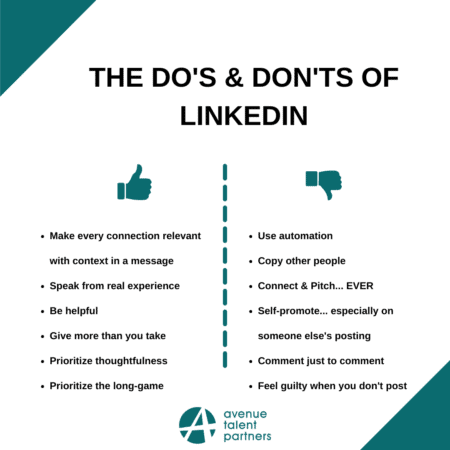
Ultimately, people want to be seen, heard, and understood. Keep your willingness to give and understand at the forefront when you’re communicating with people on LinkedIn and people will naturally gravitate toward you.
When you’re adding real value to your community and engaging with people from a place of genuine interest, you’ll start to build a real brand that people are excited to connect with on a regular basis for the long haul.
